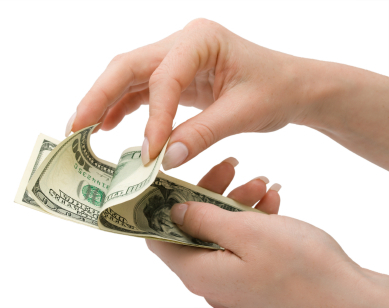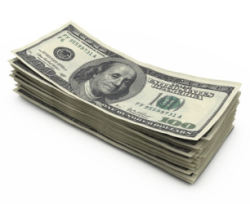Selling At Craft Fairs: How To Price And Profit
Pricing, pricing, pricing! “Where should I price my product?” is the never-ending question. Every small business owner has asked it when getting ready for a craft fair. Is the price too high? Too low?
From my experience, I can tell you that the bottom line is that your time is money and that there is value in that. So don’t sell yourself short by pricing too low and don’t allow inventory to just sit there by pricing items too high. Here are some ideas on how you can do what you love and reap the benefits of selling at the same time.
I’d like to share three techniques on how I come up with pricing when getting ready to sell.

Price Point
Following are several factors you should consider when setting prices for your hand-made items.
1. Cost of Materials: Write down the total cost of your materials per item. If you use one yard of material, but make three items from that one yard, then divide the price of the yard by three and apply the cost to the item. Accounting for all costs is very important so you know what your break-even point is.
2. Related Costs: Account in your expenditures for the cost of the booth, any travel expenses, etc. Divide the total amount of related costs by the number of products you’ll be selling and you’ll have a better idea of the amount to add to each item sold.
3. Pay Yourself: As I mentioned before, your time is of utmost value. Set a reasonable hourly rate and multiply by the time it takes to produce each item sold.
Add these factors together and now you’ll have a better idea of how much you should charge.
The most important thing is to find a pricing strategy that works for you. But notice I used the word, “strategy.”
I use that term because there really can be a “science” to it. Make sure you do not guess what a “good price” might be without taking into account your costs. Make it worth your while by doing the homework beforehand to come up with a price that will be positive for your business.
“Know the Show” and Plan Accordingly
You also need to keep in mind the audience you are selling to and what price the market will bear. If your high-priced items just won’t sell, look for ways to reduce your materials/labor costs, which will allow you to lower your price and still sell profitably. If this can’t be done, find something different that you can sell for a lower price while still making a profit. Each craft fair is different, and even the market and economy will vary from year to year, so make sure to keep these factors in mind.
“Knowing the show” will also allow you to understand the groups who will be coming through. Oftentimes juried shows attract an audience who are willing to pay a higher dollar amount. A show at your local elementary school gymnasium may have you rethinking the items you choose to sell. It’s hard to tell, but taking the time to evaluate after each show you do will help you the next time.
Ways to Move Your Products
And finally, a few ideas on how to “move your products” when selling at a craft fair. What works for one might not work for all, so be creative in how you package your prices. That is one of the luxuries of being the one in charge! You decide for yourself some new ways to sell! Here are a few ideas:
1. Offer a wide range of price points. Make sure everything is clearly marked. Potential customers want to know immediately how much something costs. I like to call it the “Car Sales” approach. I don’t know about you, but one of the things I don’t like when I am looking for a car is not being able to find a price front and center in the window. If I see the price at first, then I immediately know what is within my budget and what is not. If I don’t see a price, it is a rarity that I will actually find the sales person to inquire about the price. I want something fast and easy. The easier it is to find a price, then the more likely I am to become more interested. Offering items at different prices that are clearly marked will bring more consumers into your booth. They are less likely to “just walk on by” because it is obvious if they’ll be able to find something in there that fits their price range.
2. Combine items. Pair items together that, if sold separately, would individually be priced a little higher. But be sure to advertise to customers that if the items are sold together, the price is lower. Customers will feel they have received great value for their purchase. And they should, too! You’ll make more money with a higher transaction value. It’s a win-win for both the buyer and the seller.
3. Get creative with your sales! Here are just a few ideas of what you can do to boost your sales!
- Include a small, free gift with a minimum purchase amount.
- “Buy one, get one at 50% off” sales.
- “The more you buy, the more you save” kind of sale. For example, if they purchase $50 worth, then they could receive 10% off their entire order, or if they purchase $100 worth, then they may receive 20% off their order.
- Offer free personalization whenever possible. Many are coming to these shows for that one-of-a-kind, unique gift to give. Personalizing something shows exactly that. They won’t be able to find that at a big chain store! So if possible, personalize! You might even think about taking pre-paid orders for items to be personalized at home later for pick-up.
Pricing can be tricky, but each time you sell, you will learn so much. Ask friends and family for objective and honest opinions. Keep an open mind and don’t be defensive. Talking with them can be very helpful. Discussing these things with fellow crafters both online and around your community can also be beneficial.


